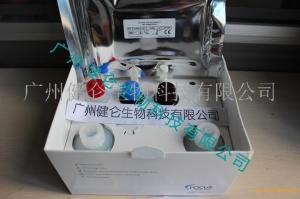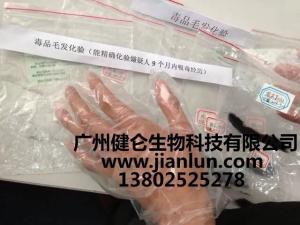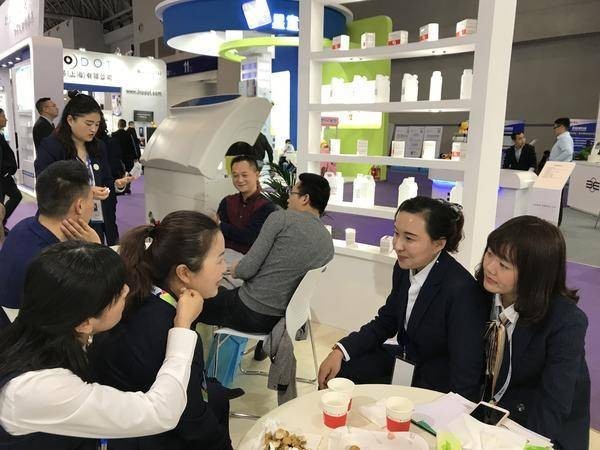


|



| 产地 | 英国进口 |
| 品牌 | 英国 |
| 货号 | |
| 保存条件 | 2-8℃ |
| 英文名称 | Detection of Brucella-specific antibody staining bacteria suspension |
| 保质期 | 2年个月 |
| 染色菌悬液 | |
| 染色菌悬液包装为5ml/小瓶 | |
| 中文名称及用途 | 英文名称 |
| 布鲁氏菌 | Brucella |
| 热病抗原的染色菌悬液,用于检测、鉴定和定量血清中的布鲁氏菌特异性抗体 | |
| 流产布鲁氏菌 | Brucella abortus |
| 羊种布鲁氏菌 | Brucella melitensis |
| 热病阴性对照(2ml) | Febrile Negative Control (2ml) |
| 可与所有的染色菌悬液配合使用 | |
| 变形杆菌 | Proteus |
| 热病抗原染色菌悬液,用于检测、鉴定和量化血清中的立克次体抗体(某些变形菌与某些立克次体共用一部分抗原) | |
| 变形杆菌OX2 | Proteus OX2 |
| 变形杆菌OX19 | Proteus OX19 |
| 变形杆菌OXK | Proteus OXK |
| 热病阴性对照(2ml) | Febrile Negative Control (2ml) |
| 可与所有的染色菌悬液配合使用 | |
| 沙门氏菌 | Salmonella |
| 热病抗原的染色菌悬液,用于检测、鉴定和量化血清中的沙门氏菌特异性抗体 | |
| 肠炎沙门氏菌H(g,m) | Salmonella Enteritidis H (g,m) |
| 新港沙门氏菌H sp(e,h) | Salmonella Newport H sp (e,h) |
| 沙门氏菌(1,2,5) | Salmonella non-sp. (1,2,5) |
| 副伤寒沙门氏菌 A-H (a) | Salmonella Paratyphi A-H (a) |
| 副伤寒沙门氏菌 A-O (1,2,12) | Salmonella Paratyphi A-O (1,2,12) |
| 副伤寒沙门氏菌 B-H (b) | Salmonella Paratyphi B-H (b) |
| 副伤寒沙门氏菌 B-O (1,4,5,12) | Salmonella Paratyphi B-O (1,4,5,12) |
| 副伤寒沙门氏菌 C-H ( c ) | Salmonella Paratyphi C-H ( c ) |
| 伤寒沙门氏菌 H (d) | Salmonella Typhi H (d) |
| 伤寒沙门氏菌 O (D群) (9,12) | Salmonella Typhi O (Group D) (9,12) |
| 伤寒沙门氏菌 Vi | Salmonella Typhi Vi |
| 鼠伤寒沙门氏菌H (i) | Salmonella Typhimurium H (i) |
| 热病阴性对照(2ml) | Febrile Negative Control (2ml) |
| 可与所有的染色菌悬液配合使用 | |
| 热病阳性对照(2ml) | Febrile Positive Control (2ml) |
| 与a,b,c,d群沙门氏菌染色菌悬液配合使用 | |
| 伤寒沙门氏菌 Vi标准抗血清 | Salmonella Typhi Vi Standard Serum |
| 与伤寒沙门氏菌Vi染色菌悬液配合使用对凝集检测进行标准化。冻干管,重新溶至4ml。 |


Gram staining: gram staining is a differential staining method widely used in bacteriology. Bacteria are dyed by alkaline dye crystal violet and then dyed by iodine solution and then decolorizing with alcohol. Under certain conditions, some bacteria mordant color will not be removed, some can be removed, the former is called Gram-positive bacteria, and the latter is Gram-negative bacteria. In order to facilitate further observation, after decolorizing, the alkaline tomato red was reused, and the positive bacteria were still purple, and the negative bacteria were dyed red. This is the principle of Gram's dyeing. The steps include four steps: initial dyeing, mordant, decolorization and reproduction. The main steps are as shown in the diagram. Although spores can be seen in Gram stain, special spores can be used to make spores and mycelia in different colors when they are not easily observed. The main method of malachite green spore staining staining and phenol fuchsin staining method. The specific steps of the coloring method of malachite green are: first, after the smear of the inclined surface of the spore, the 10min is dyed with the green water solution of the saturated peacock, then flushed with tap water, and then washed with 0.5% red liquid, then 30s, washing and drying. The spores are green, mycelium and spores at the time of microscopic examination. The sac was reddish. The specific steps are as follows: first, according to the conventional smear, then add stone carbonate to the smear, and then slowly heat it under the slide to make the dye steam but not boil, and continue to add the dye, not to dry the dye liquid on the smear, so as to keep the 5min. After the smear is cooled, the dye is tilting, and the acid alcohol decolorization refers to the elution of the non red dye. Then the dye is washed thoroughly. After washing, the 2-3min is repeated with LV's methylene blue and the water is washed and sucked to the mirror. The cysts are blue and the spores are red in the mirror examination.